Fiction
Nonfiction
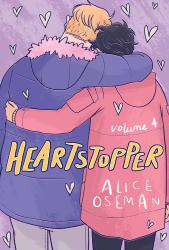
Every time I think, "Alice Oseman can't possibly outshine previous Heartstopper books," she proves me wrong! This graphic novel had beautiful art and great representation. Heartstopper: Volume Four follows Charlie and Nick as they deal with separation anxiety, saying "I love you", and working through Charlie's declining mental health. There are some really important themes introduced, the biggest being Charlie's anorexia and OCD diagnosis. This was a really emotional part of the book, but it is also crucial for more young adult books like this to spread awareness about how common mental illnesses are. Charlie and Nick's relationship is strong, but it was also cool that they discussed how spending time with other loved ones instead will strengthen their relationship. Plus, their friends are diverse, endlessly kind, and could easily be real people. It is always a joy to read this series, and I can't wait for Volume Five!
Grade 12
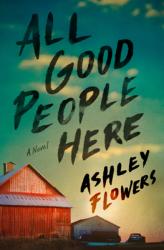
I am a big fan of Ashley Flowers from her career with audiochuck podcasts, so reading her first novel was a no-brainer. The story is about a journalist named Margot who returns to the small town in which she grew up to care for her uncle struggling with memory loss. However, the disappearance of a young girl at the same time causes Margot to reflect on the unsolved murder from her childhood, decades back. Like a true investigator, she sets out to solve both cases once and for all. Previous reviews had hinted at constant plot twists, and I definitely experienced that the whole way through. The case wasn't truly solved until literally the last page. Overall, Flowers' writing style is just as eloquent as her podcasts, with unique characters and eerie suspense. Although a few side characters, like the police officer Margot befriends, are pretty bland, more time spent on the Jacobs family character development seemed like the intention all along. And as soon as one plot twist had been announced, it was written off to make way for the next one quite suddenly. It felt as though some character explanations were still unfinished. Finally, though I hate to say it, such an abrupt ending was kind of unsatisfying. It was almost a five star book through-and-through, and just one more chapter could have done it. Nonetheless, I will recommend this book any day!
Grade 12
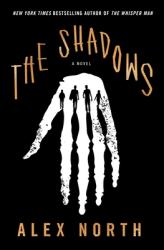
The Shadows by Alex North is about a brutal crime that rocks a small town, and haunts the ones closest to it. Paul grew up alongside three boys, two of which would later murder one of their fellow students. Twenty-five years later, Paul returns to the town to visit his dying mother and is forced to uncover deeply-hidden secrets about the murder when new crimes start to happen. I liked how each chapter revealed new clues and the final result was difficult to guess. There were several plot twists that felt well-calculated. For as exciting as the plot was, Paul was a very bland main character. The way he described his childhood with the future murderers was boring, and I didn't like the lucid dreaming theme. It seemed like the author was going for a strange cult theme, but it was muddled with the constant flashbacks to present-day. It was a good read for the Halloween season, but not my favorite otherwise.
Grade 12
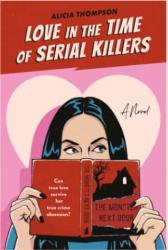
There was no way I was not going to read a book with the title of Love in the Time of Serial Killers! It did not disappoint. It is an unconventional romance with friendship, mourning, and true crime thrown in. Phoebe is a PhD candidate(she's writing her disseration on the true crime genre) who has to spend the summer in Florida helping her brother Connor clean out their childhood home after their father passes away. For Phoebe it is very complicated - she was estranged from her father and has unpleasant memories of her childhood. On top of that she suspects her neighbor Sam is a serial killer! Since I am a fan of true crime, I enjoyed how the author wove in facts about real true crime in the story. If you like quirky romances and a fan of true crime, you will enjoy this book.
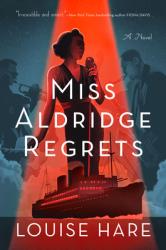
If you are a fan of locked room mysteries, you will enjoy Miss Aldridge Regrets! It is a historical mystery set in 1936 London. Lena Aldrige is a mixed race nightclub singer in a Soho nightclub. The club's owner is murdered and Lena isn't sure what she is going to do when a chance of lifetime drops in her lap. She is approached by a man who said his boss knew her father and wants to offer her a job starring in a Broadway show and will pay passage for her first-class on the Queen Mary. Lena takes the offer and is looking forward to her new life in New York. But as her trip unwinds, people on the ship start to be murdered and she looks like the prime suspect. There are a few other surprised for Lena as well. This was a wonderful mystery and a great start to the Canary Club Mystery Series.
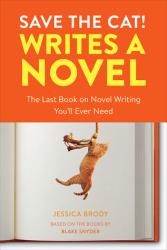
I had already written a dozen manuscripts by the time I read Save the Cat! Writes a Novel. Most of my plots had come fairly easily to me, but as a father, I now have less time to spend on planning novels. The plot of the last trilogy I drafted felt unfocused, so I knew I needed some way to re-structure my unedited and unwritten novels from here on out. When I asked my writer friend to suggest a few books to help me, she gave me this one to read. I am now a changed man.
I had already heard of this book from a few other writers who use its method, but now I truly understand the appeal. Looking back on the books I had written, I was already using parts of the Save the Cat structure subconsciously. Fortunately, now that I had the full picture of this writing technique, I easily outlined a few novels that were banging around in my head. Save the Cat helped me figure out the climax of a third act. It also helped me realize the spot where I wanted to start a book was actually the start of Act 2.
Save the Cat is good for diagnosing why a plot isn't working as much as it is to guide a new plot into a strong outline. There are plenty of examples included in this book (maybe too many, all things considered) that are mostly from books that any avid reader of popular literature has already read. Yes, following Save the Cat might give your plot a "formulaic" feel, but it's a formula that has clearly worked for decades.
A useful method to diagnose and build plots, I give Save the Cat! Writes a Novel 4.5 stars out of 5.
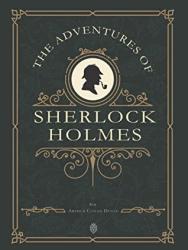
Sherlock Holmes is a very attractive and intresting character.he inspects and sees the Little details that we normally would not associated with how we gather his information. It takes a lot of general knowledge to be able to pull those links together from the people he observes or the evidence that he finds and inspects.
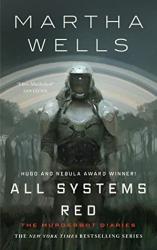
Sentient artificial intelligence is a topic that science fiction has covered for decades. Somehow, in all that time, I haven't really come across many stories from the perspective of the newly sentient AI. All Systems Red scratches that itch in a way that's intriguing but merely feels like a prologue to something much more interesting. Perhaps I'm just used to longer-form stories that explore such a complex topic like this. Still, to so densely convey what it's like to be a robot now in control of its destiny takes a certain level of skill.
The problem is, it's been about six months since I listened to this audiobook and I can't recall much about it other than it's in first person via the "Murderbot" point-of-view. I guess there was some humor involved with this robot describing things that we as humans almost take for granted—using the external observer to point out the quirks in our species. And maybe the bigger reason it hasn't stuck with me very much is that the titular Murderbot decides to be a lazy human with its freedom.
I understand that this novella is still early in the series, so I haven't read far enough to get invested yet. I just wonder if it would have worked better as a "book one" in a combined volume of three or four novellas. Once I can get my hands on the other "Diaries" in this series, I might change my opinion about this first entry. As it stands right now, it's short enough that I think others should read it for the unique point-of-view, regardless of how deep it gets into the larger story of the series.
A short but interesting take on an AI who gained their sentience, I give All Systems Red 3.5 stars out of 5.
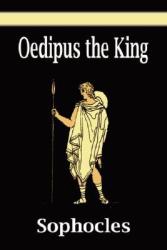
The play Oedipus the king is one of the most tragic play. In the end of the play the protagonist fall into tragic downfall.. However ,I like the characters role of king Oedipus.. Whenever he made decisions to end the plague in order to end his people suffering.
Another ther event I like his character is when he care of his people and considering his people like his own family.. To become an admirable leader ..one should considering his people like his own family.. Oedipus is the best example in this play. Nevertheless this play could not be much interesting in the end of the play, when they found out the true prophecy Jocasta killed herself and king Oedipus taking his eyes off.
However if I were recommended to get a book.. This book will be the best,inorder to know the identity of ourselves.
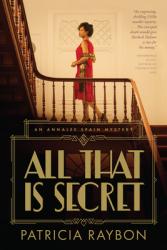
All That Is Secret launches the reader into a sobering event, immediate choices, and gripping consequences. Annalee Spain is a bright, compassionate professor of theology in Chicago who might be up to the task. A mysterious telegram, a conversation with her wise landlady, and Ms. Spain's empathy in her brief interaction with a young delivery boy propel Ms. Spain into decision. But a professor of theology has her own questions. Is this mystery worth risking a conversation with the God who seems so distant? The telegram's author weighs-in and the mystery ramps-up.
I found myself flipping back three chapters to re-read interesting relational intricacies and investigative details. The richly defined individuals, the character-specific language, and the locomotive pace create vivid scenes that kept me riveted. I highly recommend this book.
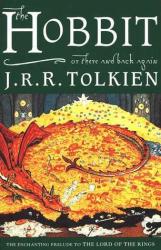
If you are looking forward to diving into the fascinating world of dwarves, wizards and elves and feel ready to fight evil wolves, man-eating trolls and a fire-breathing dragon Smaug, then The Hobbit by J. R. R. Tolkien is definitely for you. A warm children’s fantasy novel, which, however, will captivate the hearts of many adults, takes you to the atmosphere of fairy tales that you were listening to by the fireplace as a kid.
The main character, hobbit Bilbo, at first reminds us of ourselves. He, as all the hobbits are supposed to do, loves eating good food, spending time at home and making their houses cute and cozy. However, his routine crashed as a dropped pot, when a wizard Gendalf knocked at his door. Welcoming him inside, Bilbo could not even imagine that soon he would go on a true adventure all the way to the Lonely Mountain and save an ancient treasure from the claws of a furious dragon. On his way he will meet many different creatures, make friends and enemies, defeat mountain trolls, get captured by giant spiders, get into another captivity right after that, outplay Gollum in the caves and get the magical ring. But what is more important, Bilbo will turn into a brave warrior (what a shame for the entire generations of hobbits!) and a loyal companion.
The author's writing style and original universe makes it impossible to stay indifferent to the story. Kind and soft narration wraps you as an old blanket and keeps you cozy even in the coldest evenings. Younger readers, as well as their parents, will find many life lessons on the pages of The Hobbit, such as why it is important to make smart choices, appreciate your friendships and be ready to help those who are in trouble. The book is an awesome pick for both family time and independent reading.
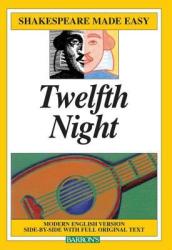
Great book! It's actually so hilarious because of the love triangle. Highly recommended!!
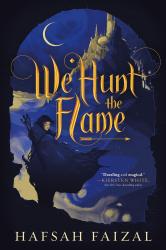
We Hunt the Flame is about a girl named Zafira who is forced to take on the role of breadwinner after her father died. She is a strong-willed, independent character who gets dragged into a quest to find a rare item with incomparable power. While she has noble intentions, the prince, Nasir, takes on a role of assassin as he fights to find the artifact before she does. I really liked the slow-burn romance throughout the book, and how Zafira's personality doesn't change as she falls in love. Nasir's character arc is a really important lesson too, as he struggles with a need for approval from his father, and the cost of that approval. The other characters were really interesting as well. The author did a wonderful job of describing each personality, so even though there were a lot of characters, I never got confused between them. Near the end, a lot of the action did muddle what I thought would be an epic conclusion to the book, and the plot twists at the end were interesting but not necessary. It was obvious that the author wanted to set up a plot for the second book, but it felt forced. However, the characters were likeable, not predictable, so you might catch me reading the sequel!
Grade 12
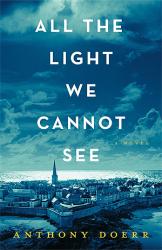
All the Light We Cannot See by Anthony Doerr is a historical fiction novel that is set in World War II. This book focuses on two characters Marie-Laure Leblanc and Werner Pfennig. Marie-Laure is a blind girl in France that relies on her father to help her live her life. Werner is a genius German who gets drafted by the Nazi’s to build and find the enemy with radios. These two conflicting worlds will soon crash into each other in the most heart wrenching way possible. I recommend this book to anyone who enjoys history or suspense.
Jaala 12

A Thousand Pieces of You by Claudia Gray is a science fiction and adventure novel that anybody would love. This easy read quickly starts off with our main character, Marguerite, jumping into an alternate reality chasing her friend who killed her father. She catches him, but before he slips out of her grasp, she is conflicted with the question if he really did it or not. This book mixes physics for any math lovers, adventure for any aspiring traveler, and just a little bit of romance that makes it difficult to grasp onto what is real or fake. I would recommend this book to anybody who is in a reading slump and needs a good pick me up.
Jaala 12

Small Admissions follows Kate Pearson, right after getting brutally dumped at an airport by her handsome, French, almost-fiancé. After the prodding of friends and family, Kate takes up a job with private school admissions, and is quickly thrown in to a mess of angry parents, bratty kids, scholarship grants, and interview skills. Throughout her journey, Kate and her friends will need to learn to let go, keep going, and grow up.
I love Amy Poeppel's books because each of her characters is so wonderfully flawed that it's a love letter to changing even as an adult. Every character in this book has a lot of issues, ranging between codependency, independency, over-confidence, under-confidence, and all possible maladies in between. This was very annoying in the beginning, but it lended to the catharsis of character development at the end. I never knew I could get so invested in a middle-aged woman making one good decision, but 300 pages of horrible decisions will do that for you! The characters themselves are amazingly vibrant and likable despite their horrible choices. There were a lot of names to remember at first, but each soon became memorable in their own way. They also interacted wonderfully throughout the book. Even though some characters got more time to shine than others, watching them bounce off each other was so fun. In particular, the female relationships in this novel get a lot of time and development, which I appreciate. The writing itself was great, not a ton of prose but very smooth and concise. The themes were phenomenal, and carried through the entire piece. There's a throughline of learning to let go of things you thought you'd always have, and while this at first seems obviously related to Kate's break-up, it applies to practically every character in the novel. People have to let go of jobs, schools, belief, and people, and it really is a love letter to letting yourself change for the better.
All in all, despite some issues with the large number of initially annoying characters, this book is phenomenal! I'd recommend this book to anyone who wants great character growth, a solid story, and a lesson on letting go!
Reviewer Grade: 12
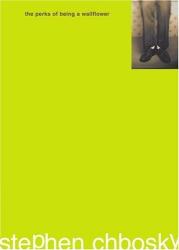
I chose this book because I had watched the movie and was curious as to how the book was in comparison. I found that both were great overall and I don't dislike one more than the other, but the book felt more mature than the movie. Overall I really did enjoy this book, the detail in the book was a great touch, as well as was relatable. Personally, I felt a connection to some of the characters having to leave for college and trying to get the best possible score on the SAT. There is only one thing I did not enjoy about this book though, which is that there is a lot of smoking. The smoking feels a bit excessive, especially when the book follows a freshman in high school, so the amount of smoking I feel like does not portray a true aspect of what that would look like in real life. I would recommend this book to an upper teenage audience since there are mature topics such as brief sexual scenes and smoking. I gave this book 4 stars since I felt like it was very well written and an enjoyable book to read; the deduction of one star was due to the portrayal of smoking. This is honestly a great read that I personally love, I would definitely recommend it!

The strength of Andy Weir's hard sci-fi storytelling was evident in The Martian . He sets up a problem, shows us a solution, then does everything in his author-ly power to prevent the main character from achieving that solution. His scientific explanations might get a little dry, but they are necessary to understand the situation without diving too deep into details. While his sophomore effort with Artemis showed me he struggles with writing women, he came back to his roots and knocked it out of the park with Project Hail Mary.
There are many similarities between The Martian and Project Hail Mary, which is probably why I like both books equally. Sure, the stakes are higher in Project Hail Mary—with the survival of humanity on the line instead of just one astronaut—but the explanation of the science follows the same format he used in The Martian. Specifically, a problem derails all the progress made so far, and it requires more science (often jury-rigged) to fix. The twist that gives this book a slight edge over The Martian is how science is a universal concept.
I came into this book blind, which helped me fully appreciate the "buddy" dynamic between the two main characters. The flashbacks felt a little like an exposition cop-out due to Ryland Grace's amnesia, but they were necessary to ground the motivation of his character. Without Ryland's "friend" that he found on the journey, it's difficult to know if the result of the last-ditch effort to save Earth would have had the same outcome. There are strong comparisons to Ted Chiang's short story, Story of Your Life (and its film adaptation of Arrival (2016)) here, which just shows how well-thought-out this book was.
Another perfect hard sci-fi adventure by Andy Weir, I give Project Hail Mary 5.0 stars out of 5.
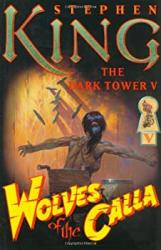
There comes a point when you've consumed enough stories that you notice similarities. Sure, there are common tropes applied to plots that make them seem similar, but what I'm talking about is when you're reading a book and immediately, you're like, "This is exactly like [FILL IN THE BLANK]." For me, the fifth book in the Dark Tower series, Wolves of the Calla, laid out its premise, and I instantly thought, "This is exactly like Seven Samurai (1954)." Fortunately, there was more to this book than this classic tale of villagers defending themselves with the help of skilled warriors.
I will give credit to Stephen King for taking a well-known plot and adding enough sub-plots to distract from the fact that this book is the Dark Tower equivalent of The Magnificent Seven (1960). This is probably because these sub-plots are the driving force behind the main story arc of the series. As such, the Father Callahan/Black Thirteen thread was a welcome distraction from the training sequences that plague stories that follow the A Bug's Life (1998) formula. It was this sub-plot that makes me excited to read the rest of this series.
All jokes aside, Stephen King's use of the "hired warriors" trope was well written in Wolves of the Calla. It used the already-established western tropes present in the Dark Tower series to present a familiar conflict. It felt fresh and unique despite having seen many iterations over the years. I especially liked the "skilled plate throwers" as it helped enforce the ease at which Gunslingers can adapt to different styles of projectiles with deadly accuracy. It's rare to see a book this late in the series have such a solid plot, but I suspect it is due to this tried-and-true plot.
The Seven Samurai of the Dark Tower series, I give Wolves of the Calla 4.0 stars out of 5.
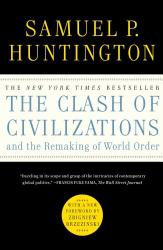
The book Clash of Civilization and Remaking of World Order is written by Samuel Huntington and published in 1996. The author served at Harvard University for almost 5 decades as a Professor of Political Science. He also served in President Jimmy Carter’s administration as Director of Security Planning for the National Security Council. This book is one of the finest works and is divided into five sections.
Section 1
The central theme of the book is culture and cultural identities which are shaping the post cold war world. Culture includes our ancestry, religion, language, history, values, and institutions. Cultural identity is most meaningful to most people. Following the end of the Cold War, we will witness a conflict of civilizations rather than a clash of countries. States are in cooperation with a common culture and are in clash with states of diverse cultures.
Huntington goes on to say that civilization is the broadest cultural entity. Like culture, civilization also includes values, norms, and institutions. Civilizations have existed throughout human history. . Idea of civilization was conceived by 18th-century French thinkers as the opposite of the concept of barbarism. Civilization has no set boundaries and it is mortal but long-lived. They evolve and also endured. Empires rise and fall, governments come and go, and civilizations remain and survive political, social, economic, and even ideological upheavals. There are different civilizations like Sinic, Japanese, Hindu, Islamic, Orthodox, Western and African.
All societies share common and basic values and if we integrate all those certain basic values, it becomes universal civilization. One civilization shares thing with another civilization Viz innovation. The most significant aspect of civilization is language and religion . If a universal civilization is emerging, then there should be an emerging universal language. English is considered to be lingua Franca. Lingua France is a tool for communication rather than a source of identity and community. Talking about religion, the writer remarks Muslims win out. Christianity spread primarily by conversion, Islam by conversion and reproduction. The proportion of Muslims in the world increase dramatically.
Section 2
In section 2, Huntington believes that western civilization is the most powerful civilization, with the ability to influence other civilizations’ politics, economies, and security. West civilization operates an international banking system, controls all hard currencies, provides the majority of the world’s finished goods, dominates international capital markets, is capable of massive military intervention, controls all sea lines, and dominates international communication. Non-western people admire the economic prosperity, technological sophistication, military power, and political coherence of western societies.
In the second half, we have a dark side of western civilization. West’s share of world political, economic, and military power went down relative to other civilizations. West victory in the cold war produced not victory but exhaustion. West’s major inner problems are stagnating population, unemployment, slow economic growth, huge government deficit, a declining work ethic, and low saving rates. Non-Westerners are also better civilized and better educated.
Then Huntington moves on to economics. East Asia’s economic development has been one of the most significant in the globe during the twentieth century. First began in Japan in the 1950s then extended to four tigers( Hong Kong, Taiwan, South Korea, Singapore) and then China. Five civilization including Russia exists in East Asia. Huntington predicts China’s economy will overtake the United States as the world’s greatest in the twenty-first century. Asians believe their economic success is due to their better culture than that of the West. Comparing Asian and Western values, Dr. Mahatir Muhammad said Asian values are universal values, and European values are European values.
Section 3
In today’s world, cultural identity will determine country alignment and antagonism. . Suppose during the Yugoslav war, Russia supported diplomatically to Serbia while Muslim countries supported Muslims Bosnia with arms and funds not because of any interest but because of cultural kinship and affinity. In the past during the cold war countries formed associations and partnerships because of their security interest, power balance, and their ideologies. People make friends with those who have the same ancestry, language, religion, and values and repel themselves from those with different ones. And because of these cultural differences, Europe hesitates to include Turkey in European club and Asians feel reluctant to include Australia in Asia. We all are different. Mahathir Mohammad says, Asians generally are modulated, devious, non-judgmental, and non-confrontational while Australians are direct, blunt, outspoken, and insensitive.
Every civilization has a core and central state that leads the civilization. It influences the world order and it guides that particular civilization. A core state acts as a big brother while member states act as young siblings. In Asia, China is a significant player. Chinese companies own businesses in the Philippines, Singapore Taiwan, Thailand, Malaysia, and Indonesia. In this way, they dominate the economy. Overseas Chinese help to make China Great. They live outside but they invest heavily in China. In Europe, Russia plays a dominant role. Muslim republics of the former USSR rely on Russia for finance and security. Armenia is backed financially and militarily by Russia in its fight against its Muslim neighbor. Russia also governs Ukraine from Moscow. In the Muslim world, Turkey, can’t lead because of its attachment to secularism. KSA can’t because of its small population which makes it dependent on the west for its security. Pakistan can’t lead because it has a poor status and suffers internal ethnic and regional conflicts. It also has a history of political instability and unrest.
Section 4
An early chapter of Section four is about the west and its relation with the rest of civilizations, weapons proliferation, and immigration. West believes non-western should adhere to their values of democracy, free market, limited government, and human rights. Non-western aspire to be independent of western policies. They like their own because the West obeys hypocrisy and double standards like non-proliferation are preached for Iran and Iraq but not for Israel. Westerns are the antagonist of Muslims and Sinic societies and this helps Muslim and Sinic societies to join their hands against the West. The enemy of my enemy is my friend.
Huntington talks about weapons proliferation. It is said that if you have a nuclear weapon, the US won’t fight you. Nuclear weapons pose a menace to the west. China and Russia have ballistic missiles capable of reaching Europe. North Korea, Pakistan, and India also have the capabilities to target the west. Terrorism and nuclear weapons have made non-western countries powerful . These are their assets against the West. The prerequisite goal of the west is not nonproliferation but counter-proliferation.
About migration, Views of the western change over time. Sometimes they prefer immigration when they have a labor shortage. But sometimes they won’t allow non-western to become western. Immigration is a threat to their language, values, and culture. The Westerners feel they are not assaulted by the army and weapons but by migrants who don’t speak their language and follow their culture. Western especially French can accept black Africans but not Muslim girls who wear headscarves.
In the later chapters of this section, the author discusses fault line wars. Fault line wars are the wars fought between states belonging to different civilizations. Rivals have different religions. Possession of territory or control over people are the possible causes of conflict. Massacres, rape, terrorism, and torture become common in these conflicts. For example In Bosnia and Herzegovina, Muslims have fought a war with orthodox Serbs and also engage in violence with catholic Croatians. During the Soviet Afghan war, Muslims Mujahideen from different countries like Pakistan, Afghanistan, Azerbaijan, and Sudan fought against the Communist Soviets. Muslims Azeris fought with Christian Armenians over control of Nagorno Karabakh. There was a war between Muslims and Christians in Sudan. There are riots between Muslims and Hindus in Kashmir. There is violence between Muslims and Jews in Jerusalem.
Section 5
Huntington concludes and keeps west civilization at the top of all civilizations because it fosters the westernization of non-western societies and modernization. Modernization includes urbanization, industrialization, literacy education, health, and socialization In terms of economy, technology, and scientific research, the West is at the apex. Western believes non-western should follow their values, institution, and culture because they are superior. Arthur Schlesinger mentions ideas of liberty, political democracy, rule of law, and cultural freedom, these all are European notions, not Asian. Further, In the future, we will have inter-civilizational battles and we can avoid them only if core states of major civilizations don’t intervene in conflicts. A civilization will surpass all civilizations if it is rich in religion, art, culture, tradition, language, values, literature and technology.



 Ruth Holley Library will be temporarily closed for approximately one week starting Mon., Dec. 2 to complete roof repairs.
Ruth Holley Library will be temporarily closed for approximately one week starting Mon., Dec. 2 to complete roof repairs.